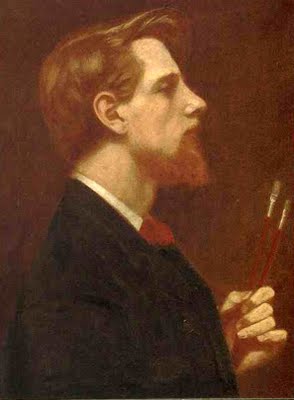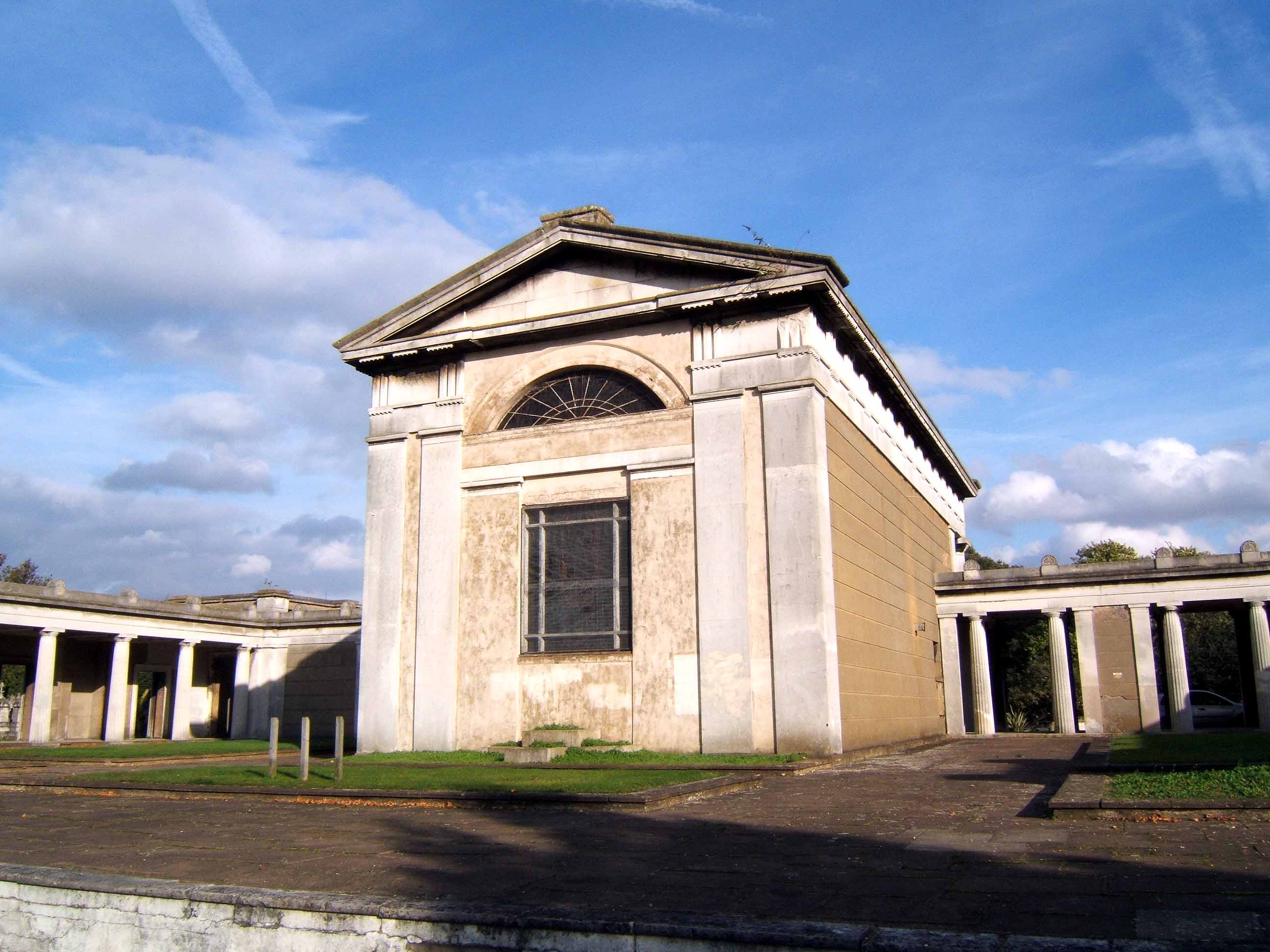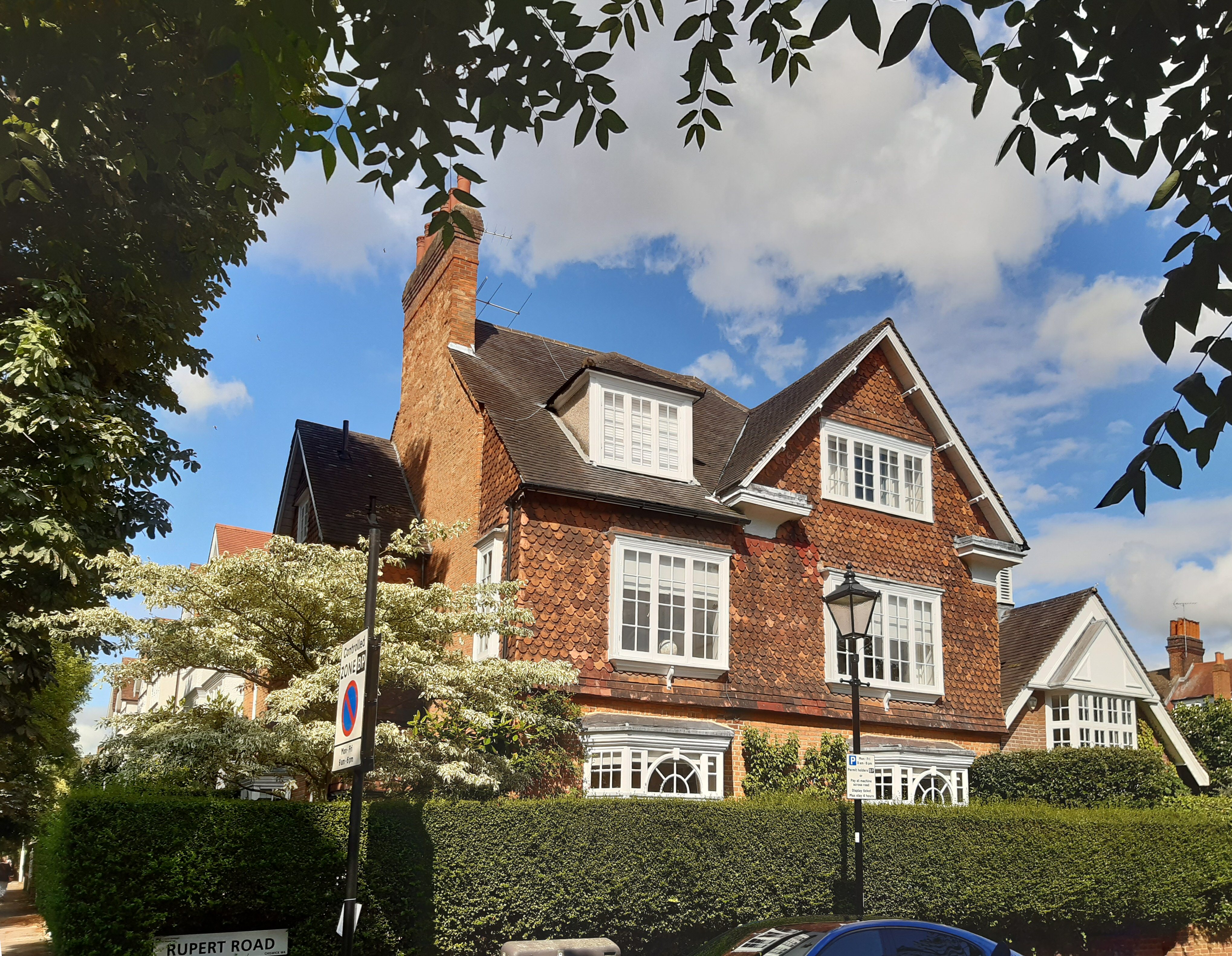|
John Trivett Nettleship
John Trivett Nettleship (11 February 1841 – 31 August 1902) was a British artist, known as a painter of animals and in particular lions. He was also an author and book illustrator. Life He was born in Kettering, Northamptonshire on 11 February 1841, the second son of Henry John Nettleship, a solicitor there, and brother of Henry Nettleship, Richard Lewis Nettleship, and of Edward Nettleship, the ophthalmic surgeon. His mother was Isabella Ann, daughter of James Hogg, vicar of Geddington and Master of Kettering Grammar School. Nettleship was for some time a chorister at New College, Oxford. Afterwards he was sent to the cathedral school at Durham, where his brother Henry had preceded him. Having won the English verse prize on the subject of "Venice" in 1856, he was taken away comparatively young, in order to enter his father's office. There he remained for two or three years, finishing his articles in London. Admitted a solicitor and in practice for a brief period, he decided ... [...More Info...] [...Related Items...] OR: [Wikipedia] [Google] [Baidu] |
Nettleship - Lion Sharpening Its Claws
Nettleship is a surname. Notable people with this surname include: *Ada Nettleship (1856-1932), British dressmaker and costume designer *Edward Nettleship (1845–1913), English ophthalmologist *Henry Nettleship (1839–1893), English classical scholar. *Ida Nettleship (1877–1907), English artist *John Nettleship (1939–2011), British schoolteacher of chemistry *John Trivett Nettleship (1841–1902), English artist *R. L. Nettleship (1846–1892), English philosopher See also *Thomas Nettleship Staley, British bishop *Ocular albinism type 1, Nettleship–Falls syndrome, an ocular disorder *Nettleship v Weston, English Court of Appeal judgment {{surname, Nettleship ... [...More Info...] [...Related Items...] OR: [Wikipedia] [Google] [Baidu] |
John Butler Yeats
John Butler Yeats RHA (16 March 1839 – 3 February 1922) was an Irish artist and the father of W. B. Yeats, Lily Yeats, Elizabeth Corbett "Lollie" Yeats and Jack Butler Yeats. The National Gallery of Ireland holds a number of his portraits in oil and works on paper, including one of his portraits of his son William, painted in 1900. Career Yeats was born in Lawrencetown, townland of Tullylish, County Down. His parents were William Butler Yeats (1806–1862) and Jane Grace Corbert; John Butler Yeats was the eldest of nine children. Educated at Trinity College Dublin, and a member of the University Philosophical Society, John Butler Yeats began his career as a lawyer and devilled briefly with Isaac Butt before he took up painting in 1867 and studied at the Heatherley School of Fine Art. After John Butler Yeats returned to Ireland in 1881, he began to exhibit paintings at the Royal Hibernian Academy, which elected him a member (RHA) in 1892. There are few records of hi ... [...More Info...] [...Related Items...] OR: [Wikipedia] [Google] [Baidu] |
Ida Nettleship
Ida Margaret Nettleship (24 January 1877 – 14 March 1907) was a British artist who is best known as the first wife of artist Augustus John. Biography Nettleship was born in Hampstead, the eldest of the three daughters of animal painter John Trivett Nettleship and his wife Adaline, better known as Ada Nettleship, dressmaker and daughter of otologist James Hinton. At the age of 15, she became a student at the Slade School of Art, where she studied until 1898 under Fred Brown, Henry Tonks, and Wilson Steer. Among her fellow students, she befriended Gwen Salmond, Edna Waugh, Gwen John, and Bessie and Dorothy Salaman. She became engaged to their brother Clement Salaman but broke it off in 1897 and traveled to Italy. She followed up with a trip to Paris in 1898, where she shared a flat with Gwen John and Gwen Salmond and studied under James McNeill Whistler at the Académie Carmen. Towards the end of her time at the Slade, she met Gwen's brother Augustus John, and they ... [...More Info...] [...Related Items...] OR: [Wikipedia] [Google] [Baidu] |
James Hinton (surgeon)
James Hinton (baptised 26 November 1822 – 16 December 1875) was an English surgeon and author. He was the father of mathematician Charles Howard Hinton. He was an outspoken advocate of polygamy. He appears as a character in some fictional accounts of the 19th-century English serial murderer known as Jack the Ripper. Life He was born at Reading, Berkshire, the son of John Howard Hinton, Baptist minister and author of the ''History and Topography of the United States'' and other works. James was educated at his grandfather's school near Oxford, and at the Nonconformist school at Harpenden, and in 1838, on his father's removal to London, was apprenticed to a woollen-draper in Whitechapel. After working there for about a year he became clerk in an insurance office. His evenings were spent in intense study, and this, combined with a concentration on moral problems, so affected his health that, aged eighteen, he tried to seek refuge from his own thoughts by running away to sea. Hi ... [...More Info...] [...Related Items...] OR: [Wikipedia] [Google] [Baidu] |
Ada Nettleship
Ada Nettleship (born Adaline Cort Hinton; 1856 – 19 December 1932) was a British dressmaker and costume designer known for working at the forefront of the Aesthetic dress style and the rational dress movement. Personal life Adaline Cort Hinton was born in either Whitechapel, London or Middlesex, the daughter of surgeon James Hinton and Margaret (Haddon) Hinton. Her siblings included the mathematician Charles Howard Hinton and they grew up in Brighton. She married the British painter John Trivett Nettleship, with whom she had three children: Ida, Ethel and Ursula. Their oldest daughter, Ida, became an artist and the first wife of British painter Augustus John. Her grandchildren included Caspar John who became First Sea Lord. Career Nettleship established herself as a dressmaker in London, expanding from an earlier specialisation in embroidery. Notable clients included the soprano Marie Tempest, and the actors Ellen Terry, Winifred Emery, Sarah Bernhardt, and Mrs Pa ... [...More Info...] [...Related Items...] OR: [Wikipedia] [Google] [Baidu] |
George Morland
George Morland (26 June 176329 October 1804) was an English painter. His early work was influenced by Francis Wheatley, but after the 1790s he came into his own style. His best compositions focus on rustic scenes: farms and hunting; smugglers and gypsies; and rich, textured landscapes informed by Dutch Golden Age painting. Much of his work was intended for reproduction in prints, from which his publishers made a good deal more money than he did. Despite being a heavy drinker who enjoyed a rackety lifestyle, he was enormously prolific, though the quality of his work increasingly suffered. After many troubles with debts in his last decade, he died at the age of 41. Biography George Morland was born in London on 26 June 1763. He was the son of Henry Robert Morland, and grandson of George Henry Morland, said by Cunningham to have been lineally descended from Sir Samuel Morland, while other biographers go so far as to say that he had only to claim the baronetcy in order to ge ... [...More Info...] [...Related Items...] OR: [Wikipedia] [Google] [Baidu] |
Browning Society
Browning societies were groups who met to discuss the works of Robert Browning. Emerging from various reading groups, the societies indicated the poet's fame, and unusually were forming in his lifetime.Murray, H. (2002) ''Come, bright improvement!: the literary societies of nineteenth-century Ontario'p.142.University of Toronto Press. . Retrieved October 2011. Browning was not consulted on their foundation and the idea did not meet with his immediate approval.P. Drew, 1970, ''The poetry of Browning: a critical introduction'P.410.Methuen & Co. Retrieved October 2011. History The earliest Browning Society, and longest continuing, was constituted in 1877 by Hiram Corson at Cornell University. The Boston Browning Society followed in 1885, which would become the largest and most influential. By 1900 there were hundreds of such groups across the United States, Canada and the British Isles.Kennedy, S.R. & Hair, D.S. (2007) ''The dramatic imagination of Robert Browning: a literary life ... [...More Info...] [...Related Items...] OR: [Wikipedia] [Google] [Baidu] |
Robert Browning
Robert Browning (7 May 1812 – 12 December 1889) was an English poet and playwright whose dramatic monologues put him high among the Victorian literature, Victorian poets. He was noted for irony, characterization, dark humour, social commentary, historical settings and challenging vocabulary and syntax. His early long poems Pauline: A Fragment of a Confession, ''Pauline'' (1833) and Paracelsus (poem), ''Paracelsus'' (1835) were acclaimed, but his reputation dwindled for a time – his 1840 poem Sordello (poem), ''Sordello'' was seen as wilfully obscure – and took over a decade to recover, by which time he had moved from Percy Bysshe Shelley, Shelleyan forms to a more personal style. In 1846, he married fellow poet Elizabeth Barrett Browning, Elizabeth Barrett and moved to Italy. By her death in 1861, he had published the collection Men and Women (poetry collection), ''Men and Women'' (1855). His Dramatis Personæ (poetry collection), ''Dramatis Personae'' (1864) and book-leng ... [...More Info...] [...Related Items...] OR: [Wikipedia] [Google] [Baidu] |
Thomas Cooper Gotch
Thomas Cooper Gotch or T. C. Gotch (1854–1931) was an English painter and book illustrator loosely associated with the Pre-Raphaelite movement; he was the brother of John Alfred Gotch, the architect. Gotch studied art in London and Antwerp before he married and studied in Paris with his wife, Caroline, a fellow artist. Returning to Britain, they settled into the Newlyn art colony in Cornwall. He first made paintings of natural, pastoral settings before immersing himself in the romantic, Pre-Raphaelite romantic style for which he is best known. His daughter was often a model for the colourful depictions of young girls. His works have been exhibited at the Royal Academy, Royal College of Art and the Paris Salon. Personal life Thomas Gotch was born 10 December 1854 in the Mission House in Kettering, Northamptonshire.' ... [...More Info...] [...Related Items...] OR: [Wikipedia] [Google] [Baidu] |
Kensal Green Cemetery
Kensal Green Cemetery is a cemetery in the Kensal Green area of North Kensington in the Royal Borough of Kensington and Chelsea and the London Borough of Hammersmith and Fulham in London, England. Inspired by Père Lachaise Cemetery in Paris, it was founded by the barrister George Frederick Carden.The Founding of Kensal Green Cemetery , Kensalgreen.co.uk, accessed 7 February 2014 The cemetery opened in 1833 and comprises of grounds, including two conservation areas, adjoining a canal. The cemetery is home to at least 33 species of bird and other wildlife. This distinctive cemetery has memorials ranging from large s housing the rich and famous to many distinctive smaller g ... [...More Info...] [...Related Items...] OR: [Wikipedia] [Google] [Baidu] |
Arthur O'Shaughnessy
Arthur William Edgar O'Shaughnessy (14 March 184430 January 1881) was a British poet and herpetologist. Of Irish descent, he was born in London. He is most remembered for his poem " Ode", from his 1874 collection ''Music and Moonlight'', which begins with the words "We are the music makers, / And we are the dreamers of dreams", and which has been set to music by several composers including Edward Elgar (as '' The Music Makers)'', Zoltán Kodály, Alfred Reed and, more recently, 808 State ( ex:el: nephatiti) and Aphex Twin ('' Selected Ambient Works 85-92''). Early life and herpetology In June 1861, at age 17, Arthur O'Shaughnessy received the post of transcriber in the library of the British Museum, reportedly through the influence of Sir Edward Bulwer Lytton. According to Sir Edmund Gosse, O'Shaughnessy was one of Bulwer Lytton's many children born out of wedlock. Two years later, he became a herpetologist in the museum's zoological department. From 1874 to his prematu ... [...More Info...] [...Related Items...] OR: [Wikipedia] [Google] [Baidu] |
Bedford Park, London
Bedford Park is a suburban development in Chiswick, London, begun in 1875 under the direction of Jonathan Carr, with many large houses in British Queen Anne Revival style by Norman Shaw and other leading Victorian era architects including Edward William Godwin, Edward John May, Henry Wilson, and Maurice Bingham Adams. Its architecture is characterised by red brick with an eclectic mixture of features, such as tile-hung walls, gables in varying shapes, balconies, bay windows, terracotta and rubbed brick decorations, pediments, elaborate chimneys, and balustrades painted white. The estate's main roads converge on its public buildings, namely its church, St Michael and All Angels; its club, now the London Buddhist Vihara; its inn, The Tabard, and next door its shop, the Bedford Park Stores; and its Chiswick School of Art, now replaced by the Arts Educational Schools. Bedford Park has been described as the world's first garden suburb, creating a model of apparent infor ... [...More Info...] [...Related Items...] OR: [Wikipedia] [Google] [Baidu] |








